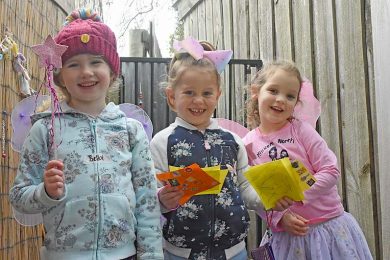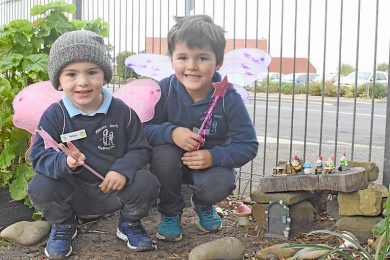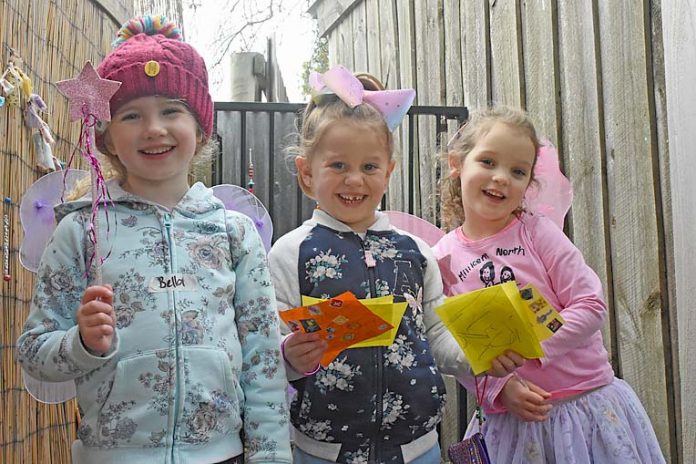
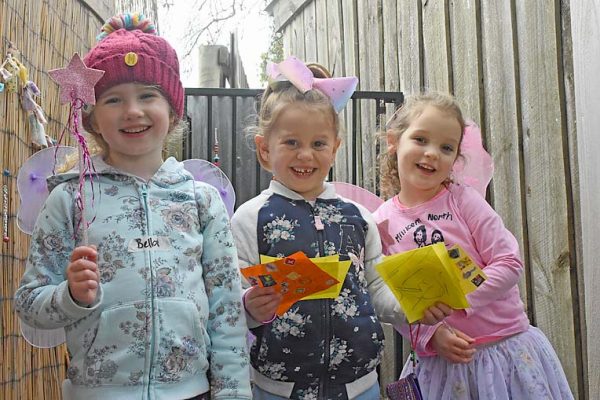
WITH the wave of a wand and a sprinkle of imagination, Millicent youngsters have unlocked the door to a fantasy fairy world, which offers a fun and creative approach to learning.
The seed of Millicent North Kindergarten’s fairy garden project was initially planted to settle a child having trouble leaving their mother.
However, it has since blossomed into an educational tool frequently used daily at the centre.
Early childhood worker Tracy Pratt said the children started leaving letters behind a door in the garden for the fairies and the magic started from there.
“The fairies have left little surprises for us, we have written letters back and it was one of those things that was either going to go for as long as the children wanted it to or it would fizzle out in the first few weeks,” she said.
“It has continued to grow bigger and bigger.
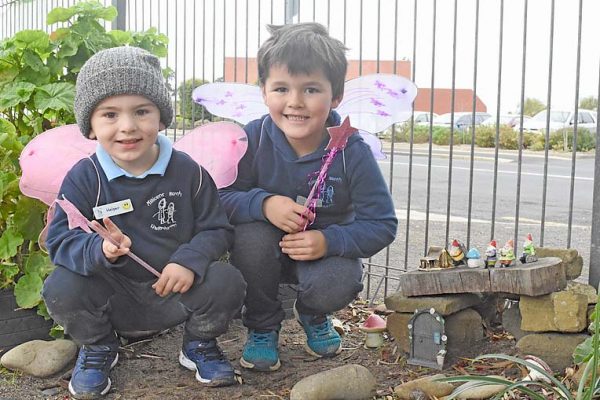
“Now as we head into term two and are focusing on bookmaking, the children are actually seeing themselves as writers and the writing to the fairies has basically been extended.
“They are actually wanting to write the names of the fairies and their own names on the back.”
Since befriending the children, the four fairies have generously left behind trails of fairy dust, wings and wands, as well as gifts of chalk, flowers to plant, jams and hot cross buns.
Ms Pratt said the centre “absolutely loved” and “embraced” the magic with some children coming in early to find any letters in the enchanted garden.
“This term we have actually had some treasure hunts,” she said.
“Children have had to listen and find clues.
“Everyone works together to find the treasure, however the person who has been asked to grab the clue had to open it, which has taught them skills in problem solving and teamwork.
“We have sort of extended the curriculum through the fairies.”
The outside fairyland has been a big hit among both genders, with the boys also busily writing letters for the newly introduced male fairy friends.
“There is at least one letter delivered to the fairies everyday,” Ms Pratt said.
“We use the letters in response as a teaching tool and a way to reference what they are learning.
“The centre is thinking of activities that children can participate in to enhance the magic, but also things they can use for development.”

